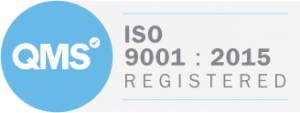
Valuation Financing & Distributable Reserves (EOT)
An often neglected consideration when structuring the financing for an Employee Ownership Trust (“EOT”) transaction involves the concept of distributable reserves (“DR”). Simply put, distributable reserves are the accumulated earnings of the business over time, less any dividends paid. They may also be referred to as retained earnings, accumulated profits or something similar. This comes into play in two contexts.
The first context involves the amount of excess cash on the balance sheet. Excess cash constitutes an increase in equity value above and beyond the value determined used multiples of some earnings measure or through a discounted cash flow analysis. The full amount of excess cash may not be available for immediate distribution to the sellers at completion, as only cash less than the amount of distributable reserves can be gifted to the EOT and paid to the sellers at completion. This is true even if the company has a very large cash balance. Any excess over the amount of DR must be paid over time when accumulated DR exceed the cash balance to be paid out.
The second context revolves around debt service. As debt service by the EOT is funded by gifts or contributions from the company of after-tax funds, the total annual contributions made by the company to the EOT can be no greater than the amount of DR. Because of this constraint, it is critical to ensure that the projected debt service on an annual basis is no greater than the projected after-tax profits for the year, plus any existing DR balance. This is the primary reason that the letter of wishes commitment on the part of the company to make contributions to the EOT sufficient to allow it to meet its debt service obligations is always contingent upon it having the available funds to make the gift. An example of how this would work follows.
Let’s assume a company interested in selling to an EOT has the following characteristics:
EBITDA – £1,000,000
Valuation Multiple – 6.00x EBITDA
Excess Cash on the Balance Sheet – £3,000,000
Distributable Reserves (Retained Profits) – £2,500,000
Valuation – 6.00 x £1,000,000 plus £3,000,000 = £9,000,000
In our example, Excess Cash is cash beyond what is needed to fund working capital and support operations. It represents an increase in the company’s equity value and also serves as a potential source of funds to finance the transaction. In structuring the transaction, the sources and uses of funds would be:
Sources of Funds:
| Cash | £3,000,000 | ||
| Bank Debt (2.5 x EBITDA) | £2,500,000 | Loan made to EOT | |
| Vendor Loan | £4,750,000 | ||
| Total | £9,250,000 | ||
| Uses of Funds | |||
| Purchase of Shares | £9,000,000 | ||
| Fees and Expenses | £250,000 | ||
| Total | £9,250,000 |
In this example, cash at completion would be £4,750,000, comprised of £2,500,000 of bank debt + £2,500,000 of distributable reserves cash, less £250,000 in fees. While the amount of excess cash is £3,000,000, the amount that can be gifted to the EOT and paid out to the vendors is limited to the amount of the distributable reserves. The remaining £500,000 of excess cash still represents an increase in equity value at completion, but it will have to be paid out when distributable reserves have increased due to profitable operations.
Additionally, the amount the company can gift to the trust for debt service purposes is also limited to distributable reserves. To the extent the company significantly reduces or eliminates its distributable reserves through the initial cash contribution, the amount it can gift the trust for debt service could be limited until distributable reserves are rebuilt following completion. As a result of the distributable reserves constraint, careful planning is required to ensure debt can be serviced in a timely manner, particularly when third party lenders are involved.
If you are considering transitioning to an EOT structure, download our fact sheet, view our webinars on the subject and contact us for an initial discussion.


